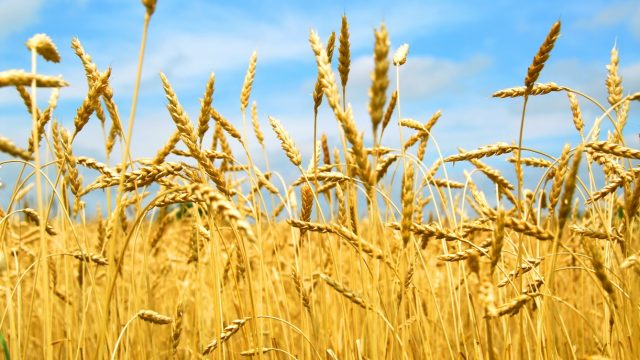Could Farmers Farm Without The Farm Bill?

The Grand Forks Herald today is declaring victory over the free market. “[I]f the Farm Bill vote is any indication, it’s conservatives turn to nod in the liberals’ direction — this time on the idea that the government isn’t always the problem after all,” writes Opinion Editor Tom Dennis on behalf of the newspaper.
Dennis evidence for this belief is based on two things. First, that the Farm Bill passed with bipartisan support. Second, that agriculture has generally prospered over the last several decades: “Since the first Farm Bill in the 1930s, rural America has been transformed, becoming much healthier and more prosperous than it had been in the decades before that,” writes Dennis.
We’re supposed to believe that’s the government’s doing, and not advancements in technology and technique largely invented and implemented by the *ahem* free market.
Better equipment allows farmers to do more with less labor. New fertilizers and pesticides protect crops, and diminish the likelihood of failed crops. Communications technology, including global positioning systems, allow farmers to maximize land usage.
To say that farming has improved as an industry because of a bunch of politicians making deals in Washington and not because of the scientists, researchers, inventors and innovators who have figured out how to farm smarter is a conceit bordering on insult.
What Dennis identifies is a correlation between the farm bill and relative farming prosperity, not a causation.
Besides, if anything, the latest iteration of the farm bill moves us at least one step closer to the free market that Dennis has such a distaste for. One of the major innovations of this farm bill is the switch from direct payment subsidies to crop insurance. That’s not exactly a move to the free market – we’re talking about a government-run insurance program, after all – but it’s at least a recognition even in the blighted fever swamp of big-government policy making that is Washington DC that there must be some market basis for farm subsidies.
Score a victory, if only a small one, for the market.
Plus, how much of the farm bill is really about farming? Roughly 80% of the bill’s nearly $1 trillion in spending is food stamps. And, historically, most of the farm bill’s subsidies have gone to farmers at the top. The bottom 80% of subsidy recipients got an average of $3,000 from the program. The top ten percent got an average of $91,000.
Many – including the media, as you can see from the Herald’s rather shallow editorial – would have us believe that we couldn’t farm without the farm bill. But is that true, or do politicians gain the most by selling the farm bill to constituents as must-pass policy? Because any objective review of the policy exposes it as more of the usual sort of vote-buying and rank cronyism that we’ve come to expect from Washington DC.




